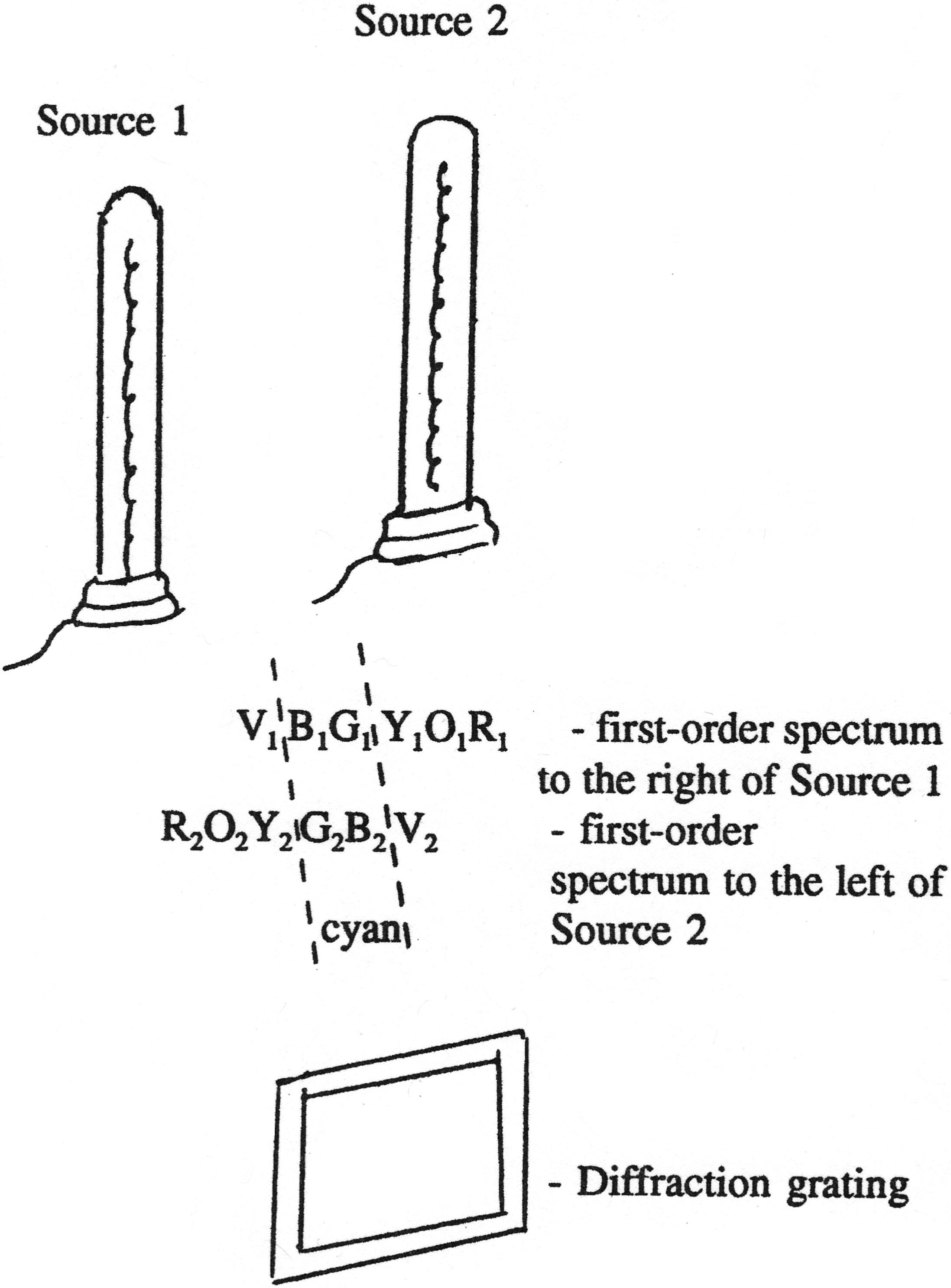Adding Colours
March 01, 1995 Filed in:
Demo CornerAlan Hirsch, Port Credit Secondary School
Having taught senior high school physics for more than 20 years, I had thought the chances of a student discovering something I hadn't seen before while performing a typical physics experiment were remote. Thus, when OAC student Karen Whiskin was performing measurements on the wavelengths of various colours of light and yelled out, “Hey sir, come and look at this!”, I was not expecting to see anything new. To my surprise and joy, Karen's discovery was also a discovery for me. Using a single diffraction grating, Karen had observed the addition of light colours and had recognized that secondary light colours were being formed from primary light colours.
To set up this demonstration, you will need two straight-filament bulbs (25 W or 40 W showcase bulbs) and a diffraction grating. (Typical gratings have about 530 lines/mm, but a new type, described elsewhere in this newsletter, has about 750 lines/mm.) Set the bulbs about 60 cm apart, and view them through the diffraction grating. Move back and forth until the first-order spectrum from one source overlaps the first-order spectrum from the other source. At the appropriate distance from the bulbs, you should be able to see red overlapping blue to produce magenta. At a different distance, you will see blue overlap with green to produce cyan (see the figure), and so on.

Karen's keen observation is all the more special to me because the students I have now could not possibly view this demonstration unless I set it up on purpose. Karen was performing the experiment in a very small room, and lab groups had to work so closely together that she was able to view the bulbs from two groups through a single grating. I now teach physics in a much larger room, and the lab groups are too far apart for the phenomenon to be seen “accidentally.”
Column Editor: Ernie McFarland, Physics Department, University of Guelph, Guelph, Ontario, N1G 2W1 Tags: Light


